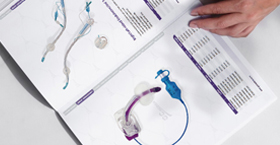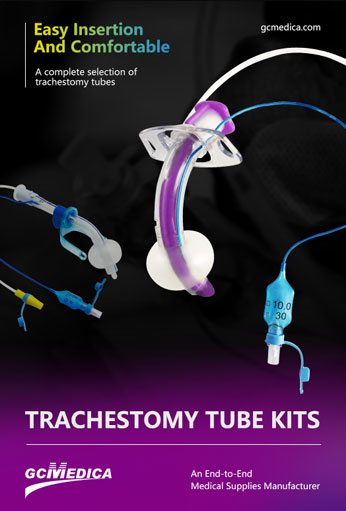A tracheostomy tube with an inner cannula consists of two concentric tubes: a permanent outer cannula and a removable inner cannula. The outer cannula establishes the airway and remains in place, while the inner cannula can be withdrawn for cleaning or replacement without disturbing the outer tube. This design minimizes the risk of airway obstruction by secretions and allows rapid restoration of patency. Inner cannulas are available in various materials—medical‑grade PVC, silicone, or stainless steel—and locking mechanisms include bayonet, twist‑lock, or snap‑fit. Proper selection depends on patient factors such as secretion volume, risk of infection, and duration of tracheostomy.
| Feature | Description |
|---|---|
| Outer cannula | Permanent tube that maintains the tracheostomy stoma; often radiopaque for X‑ray visibility |
| Inner cannula | Removable tube that fits snugly inside the outer cannula; prevents obstruction by debris |
| Locking mechanism | Bayonet, twist‑lock, or snap‑fit design for secure engagement and easy removal |
| Material options | PVC (economical), silicone (flexible), stainless steel (durable, autoclavable) |
| Advantages | – Rapid cleaning without losing airway access– Reduced need for full tube exchange |
| Disadvantages | – Slightly increased profile in the stoma– Requires training for proper removal/cleaning |
| Common indications | – High secretion burden– Long‑term tracheostomy care– ICU patients on ventilation |
Routine care involves gentle removal of the inner cannula, cleansing with sterile saline or enzymatic solution, inspection for damage, and reinsertion. Scheduled replacement based on institutional protocols helps prevent biofilm formation and infection. By combining secure airway maintenance with ease of cleaning, tubes featuring an inner cannula enhance patient safety and reduce emergency interventions due to blockage.
| Tracheostomy Tubes > |


 Français
Français Español
Español Products
Products

 About Us
About Us












